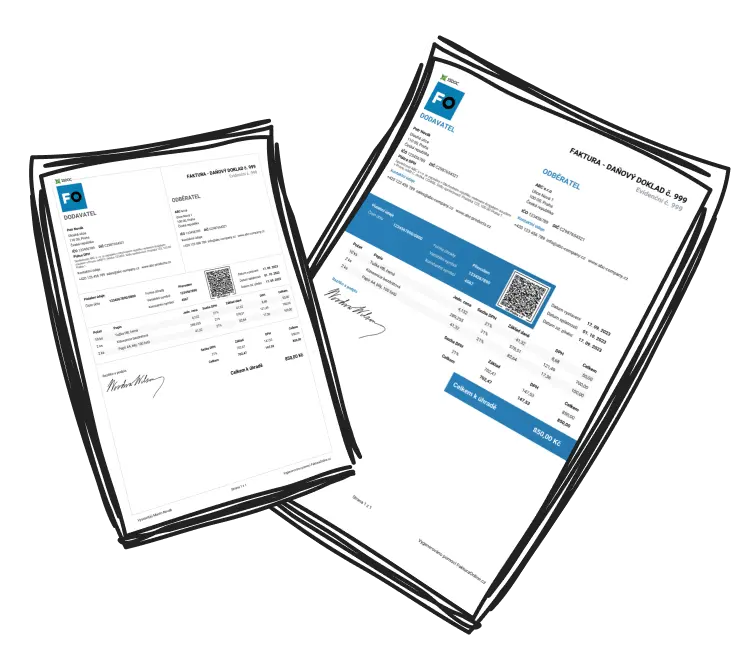Many small businesses face challenges, such as late payments or invoicing errors. Implementing auto invoices could be the perfect solution for streamlining invoicing processes, improving cash flow, and minimizing errors.
An auto invoice is a self-generated invoice created using accounting or invoicing software. These invoices are:
Automatically generated and sent to customers based on preset schedules.
Customized using templates that include details like customer information, product or service descriptions, and due dates.
Configured for manual or recurring billing as needed.
By automating invoicing, small business owners save time, avoid human error, and maintain a reliable billing process.
How Do Auto Invoices Work? Step-by-Step Explanation
Understanding the auto invoice process demonstrates how easy and efficient it is to optimize your invoice workflow with automated invoicing solutions.
Choose the Right Software
Select a cloud-based platform like QuickBooks, FreshBooks, or Xero. Ensure it suits your business needs and supports automation.Set Up Customer Profiles
Enter client details such as names, email addresses, payment methods, and billing terms.Design and Customize Invoice Templates
Include your business logo, contact information, a breakdown of products/services, applicable taxes, and payment deadlines.Create Triggers for Automation
Automate based on actions like order fulfillment, project milestones, or recurring schedules (e.g., monthly for subscriptions).Send Invoices Automatically
The software generates and emails the invoice based on the trigger.Follow Up with Payment Reminders
Configure the system to send reminders for unpaid invoices at predefined intervals.
Why Are Auto Invoices Important for Small Business Owners?
Thousands of small businesses lose revenue because of missed or delayed invoices, but using auto invoices helps ensure this doesn’t happen by automating the billing process.
Auto invoices are crucial for small businesses because they:
Save time: Automate repetitive billing tasks and free up your schedule.
Reduce errors: Minimize mistakes like incorrect totals or missing information.
Ensure timely payments: Always send invoices on time with built-in reminders.
Boost professionalism: Present a polished, consistent image to clients.
With automation, you can avoid this inefficiency.
Setting Up Auto Invoices: A Step-by-Step Guide
Even non-tech-savvy individuals can set this up in minutes with this simple guide.
Pick the Right Invoicing Tool
Popular tools include QuickBooks, Wave, or Zoho Invoice. Choose one that fits your business size and goals.Create a Client Database
Input all client information, including names, email addresses, and preferred payment terms.Customize an Invoice Template
Add your business logo, itemized services or products, due dates, and payment options. Ensure clarity in the layout for professionalism.Set a Billing Schedule
Choose how often invoices should be sent (e.g., weekly, monthly). Configure start and end dates if applicable.Link Payment Gateways
Integrate platforms like PayPal or Stripe for convenient customer payments.Test the System
Send a few test invoices to ensure accuracy and functionality. Adjust as needed.Monitor and Audit Regularly
Check the system periodically to ensure all settings align with your invoicing needs.
What Are the Benefits of Using Auto Invoices for Small Businesses?
If you’re aiming to free up time and enhance cash flow consistency, auto invoices are the ultimate solution for optimizing your financial operations.
Faster payment processing: Clients can pay directly via integrated gateways.
Improved client relations: Timely, professional invoices lead to better trust.
Reduced repetitive work: Automation eliminates manual tasks.
Fewer errors: Accurate calculations and formatting increase reliability.
Simplified tracking: Easily see unpaid and overdue invoices.
Better financial planning: Organized records support smoother tax preparation and budgeting.
Conclusion: Why Auto Invoices Are a Must-Have Tool for Your Business
Stop wasting time on manual invoicing—start automating today.
Auto invoices save time, reduce errors, and secure faster payments, all while enhancing your professional image. Whether you're a startup or an established small business, implementing this tool can streamline your financial operations and free up resources to focus on growth. Don’t wait—modernize your invoicing process now!


